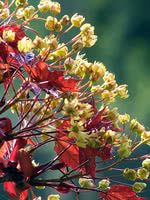Mon-Fri 9am - 5pm Mountain time
Black Elderberry vs Prairie Splendor Norway Maple
Sambucus canadensis
Acer platanoides Prairie Splendor
NOT AVAILABLE THIS SEASON - MIGHT RETURN
NOT AVAILABLE THIS SEASON - MIGHT RETURN
Black Elderberry is a deciduous shrub native to eastern North America. You can plant this shrub in moist areas and it will help stabilize your soil. You can also use it on rural properties anywhere you'd use a lilac.
Black Elderberries are considered to be partially self-pollinating. So while they will still produce some berries without cross-pollination, planting with another variety will increase yields. Consider planting with Ranch Elderberry or Bob Gordon Elderberry.
Warning: the seeds, stems, leaves, roots, and uncooked berries of the Black Elderberry are poisonous to humans when eaten in quantity. You should cook the berries to make them safe for human consumption.
Prairie Splendor Norway Maple has stunning burgundy to purple foliage in every season. It is an attractive, ornamental shade tree. Bright yellow flowers form along the branches in early spring before the leaves,
It is relatively cold-hardy, but may need some protection to thrive in colder climates. With its large oval shape and dense foliage, the Prairie Splendor Norway Maple will make a great addition to your yard and provide shade once mature.
Black Elderberry Quick Facts
Prairie Splendor Norway Maple Quick Facts
Toxicity: leaves, stems, and uncooked berries are poisonous to humans

